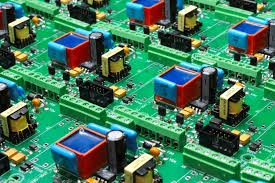With the growing demand for electronic products worldwide, the environmental impact of Printed Circuit Board (PCB) production has drawn significant attention. As the industry expands, it must collaborate with experts from various fields—such as ecology, environmental protection, chemical engineering, and health care—to develop sustainable PCB solutions that meet market demand while minimizing environmental harm. This article discusses recent advancements in green PCB production and highlights sustainable practices shaping the industry.
The Environmental Challenges of PCB Production
Before exploring sustainable practices, it is essential to understand the environmental challenges in conventional PCB manufacturing:
- Hazardous Materials: Use of toxic chemicals in etching, plating, and cleaning.
- Water Consumption: High water usage during various production stages.
- Energy Consumption: Significant energy requirements for machinery and clean rooms.
- Waste Generation: Production of solid and liquid waste, including heavy metals and organic pollutants.
- Air Pollution: Emissions from soldering processes.
- Resource Depletion: Reliance on non-renewable materials.
Sustainable Material Choices
1. Lead-Free Soldering
Switching to lead-free solder is a key step toward sustainable production.
- Benefits: Reduces toxic waste and improves PCB recyclability.
- Challenges: Higher melting points increase energy consumption.
- Innovation: Development of low-temperature lead-free solders to save energy.
2. Halogen-Free Laminates
Replacing halogen-based flame retardants with eco-friendly alternatives:
- Materials: Phosphorus-based compounds and inorganic materials.
- Advantages: Lower toxicity and better recyclability.
- Consideration: Ensuring flame-retardant performance matches traditional materials.
3. Biodegradable and Renewable Materials
Exploring sustainable alternatives to petroleum-based substrates:
- Examples: Bioplastics, cellulose-based substrates.
- Potential: Lower carbon footprint and improved disposal options.
- Challenges: Matching durability and functionality with traditional materials.
Eco-Friendly Manufacturing Processes
1. Dry Film Photoresist
Replacing liquid photoresists with dry film alternatives:
- Benefits: Less chemical use and reduced wastewater production.
- Process Improvement: More precise imaging, reducing material waste.
2. Additive Manufacturing Techniques
Transitioning from subtractive to additive manufacturing:
- Technologies: 3D printing, selective plating.
- Advantages: Minimizes material waste and allows customization.
- Status: Currently used in prototyping, with research ongoing for large-scale adoption.
3. Laser Direct Imaging (LDI)
Using laser technology for precise imaging:
- Benefits: Eliminates the need for photomasks, reducing chemical waste.
- Efficiency: Increases accuracy, lowering waste from production errors.
Water Conservation and Treatment
1. Closed-Loop Water Recycling Systems
Using advanced systems to recycle water internally:
- Process: Treat and reuse water within the facility.
- Impact: Reduces freshwater consumption and wastewater discharge.
- Technologies: Reverse osmosis, membrane filtration, ion exchange.
2. Dry Processing Techniques
Developing methods that require little or no water:
- Examples: Plasma cleaning, dry etching.
- Benefits: Minimizes water consumption and reduces wastewater generation.
Energy Efficiency Measures
1. High-Efficiency Equipment
Investing in energy-efficient machinery and equipment:
- Examples: Variable-speed pumps, high-efficiency motors.
- Strategy: Regular maintenance and upgrades to ensure optimal performance.
2. Renewable Energy Integration
Incorporating renewable energy sources:
- Options: Solar panels, wind turbines, geothermal energy.
- Implementation: On-site generation or purchase of renewable energy.
3. Smart Factory Systems
Leveraging IoT and AI for real-time energy management:
- Capabilities: Monitoring and adjusting energy usage dynamically.
- Benefits: Reduces energy waste and optimizes production schedules.
Waste Reduction and Management
1. Design for Environment (DfE)
Incorporating environmental considerations in the design phase:
- Principles: Minimize material usage and design for recyclability.
- Tools: Software to analyze environmental impacts during the design process.
2. Advanced Recycling Technologies
Developing more effective recycling methods for PCBs:
- Processes: Automated disassembly and advanced material separation.
- Innovation: Using biotechnology for metal recovery from e-waste.
3. Zero Liquid Discharge (ZLD) Systems
Implementing ZLD systems to eliminate liquid waste:
- Process: Treat and reuse all wastewater within the facility.
- Benefit: Prevents environmental discharge and recovers valuable materials.
Green Chemistry Initiatives
1. Non-Toxic Alternatives
Replacing harmful chemicals with eco-friendly alternatives:
- Example: Using citric acid instead of sulfuric acid for etching.
- Research: Ongoing studies into bio-based chemicals for PCB production.
2. Supercritical CO2 Cleaning
Using CO2-based cleaning methods:
- Benefits: Eliminates water and solvent use.
- Advantage: CO2 can be recycled, reducing environmental impact.
Supply Chain Sustainability
1. Responsible Sourcing
Ensuring suppliers meet environmental standards:
- Practices: Supplier audits and environmental performance benchmarks.
- Certifications: Preference for suppliers with ISO 14001 or equivalent certifications.
2. Local Sourcing
Prioritizing local suppliers to reduce emissions:
- Benefits: Lowers transportation-related carbon emissions and enhances supply chain resilience.
Regulatory Compliance and Beyond
1. RoHS and REACH Compliance
Meeting and exceeding regulatory standards:
- RoHS: Restriction of Hazardous Substances.
- REACH: Registration, Evaluation, Authorization, and Restriction of Chemicals.
- Proactive Approach: Staying ahead of future regulations.
2. Voluntary Environmental Certifications
Seeking additional certifications for market differentiation:
- Examples: EPEAT, TCO Certified.
- Benefits: Boosts market reputation and meets customer demand for green products.
Challenges and Future Outlook
While progress has been made, certain challenges remain:
- Cost: Initial investments in sustainable practices can be high.
- Performance Trade-offs: Ensuring eco-friendly alternatives meet the required performance.
- Technological Limitations: Some sustainable technologies are still under development.
- Industry Resistance: Overcoming inertia in established manufacturing practices.
Looking to the future, the following trends will shape sustainable PCB production:
- Circular Economy Models: Moving from linear processes to closed-loop systems.
- Bio-Inspired Materials: Developing biodegradable materials inspired by nature.
- AI and Machine Learning: Optimizing production processes in real-time.
- Policy Drivers: Regulatory pressure driving faster adoption of green practices.
Conclusion
Environmental sustainability is no longer optional—it is essential for the PCB industry. Adopting sustainable practices offers opportunities for innovation, cost savings, and market differentiation. As environmental awareness grows, the PCB sector must continue to evolve by developing eco-friendly processes. Collaboration between manufacturers, researchers, policymakers, and consumers will be crucial in building a sustainable future for electronics production.
The road toward greener PCB production UK is long, but with continued efforts and innovation, the industry can lead the way toward a more eco-friendly technology landscape. For all your PCB needs, PCB Company UK offers top-notch manufacturing and pcb assembly solutions—explore our offerings today!”
